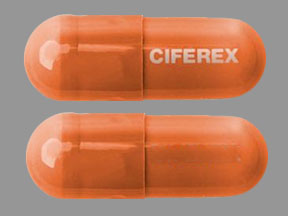Cholecalciferol/folic acid Disease Interactions
There are 6 disease interactions with cholecalciferol / folic acid.
Folic acid (applies to cholecalciferol/folic acid) anemia
Major Potential Hazard, High plausibility. Applicable conditions: Anemia of Unspecified Nutritional Deficiency
The use of folic acid is contraindicated in patients with undiagnosed anemia. Folic acid in dosages above 1 mg/day can obscure the diagnosis of pernicious anemia by alleviating the hematologic abnormalities while allowing the progression of neurologic complications. In addition, folic acid alone is improper therapy in the treatment of pernicious anemia and other megaloblastic anemias where vitamin B12 is deficient.
Vitamin D analogs (applies to cholecalciferol/folic acid) arrhythmia
Major Potential Hazard, High plausibility. Applicable conditions: Arrhythmias
Vitamin D analogs function to increase serum calcium concentrations and can exacerbate arrhythmias, particularly in patients receiving cardiac glycosides. Therapy with vitamin D analogs should be administered cautiously in patients with or predisposed to cardiac arrhythmias. Clinical monitoring of serum electrolyte concentrations and cardiac function is recommended.
Vitamin D analogs (applies to cholecalciferol/folic acid) electrolyte imbalance
Major Potential Hazard, High plausibility. Applicable conditions: Phosphate Imbalance
Vitamin D analogs administered in the presence of hyperphosphatemia can result in precipitation of calcium-phosphate deposits within the vascular or renal systems or other soft tissue calcifications. A solubility product (Serum Calcium X Phosphate) should not exceed 70. Serum electrolyte concentrations should be corrected prior to vitamin D analog therapy and monitored during therapy.
Vitamin D analogs (applies to cholecalciferol/folic acid) hypercalcemia
Major Potential Hazard, Moderate plausibility. Applicable conditions: Malabsorption Syndrome
Vitamin D analogs such as calciferol and ergocalciferol should not be given to patients with hypercalcemia, malabsorption syndrome, or evidence of vitamin D toxicity.
Vitamin D analogs (applies to cholecalciferol/folic acid) renal dysfunction
Major Potential Hazard, High plausibility.
Ergocalciferol, cholecalciferol, and calcifediol undergo renal biotransformation during metabolic activation. Renal impairment can alter metabolic and therapeutic activity of certain vitamin D analogs. Alternative vitamin D analogs such as dihydrotachysterol (hepatic activation) and calcitriol (active form) may be considered in patients with compromised renal function.
Vitamin D analogs (applies to cholecalciferol/folic acid) hepatobiliary dysfunction
Moderate Potential Hazard, High plausibility. Applicable conditions: Liver Disease, Biliary Obstruction
Vitamin D analogs are fat soluble and oral formulations require bile for adequate intestinal absorption. Hepatic and/or biliary dysfunction decrease the absorption of vitamin D analogs. Metabolites of vitamin D analogs are primarily excreted in bile and feces. Ergocalciferol, cholecalciferol, and dihydrotachysterol undergo hepatic hydroxylation during metabolic activation. Hepatic impairment can alter the metabolic and therapeutic activity of certain vitamin D analogs. Alternative vitamin D analogs such as calcifediol (requires renal activation) and calcitriol (active form) may be considered in patients with compromised hepatic function.
Switch to professional interaction data
Cholecalciferol/folic acid drug interactions
There are 115 drug interactions with cholecalciferol / folic acid.
Cholecalciferol/folic acid alcohol/food interactions
There are 2 alcohol/food interactions with cholecalciferol / folic acid.
More about cholecalciferol / folic acid
- cholecalciferol/folic acid consumer information
- Check interactions
- Compare alternatives
- Reviews (1)
- Side effects
- Drug class: vitamins
- En español
Related treatment guides
Drug Interaction Classification
| Highly clinically significant. Avoid combinations; the risk of the interaction outweighs the benefit. | |
| Moderately clinically significant. Usually avoid combinations; use it only under special circumstances. | |
| Minimally clinically significant. Minimize risk; assess risk and consider an alternative drug, take steps to circumvent the interaction risk and/or institute a monitoring plan. | |
| No interaction information available. |
See also:
Further information
Always consult your healthcare provider to ensure the information displayed on this page applies to your personal circumstances.


